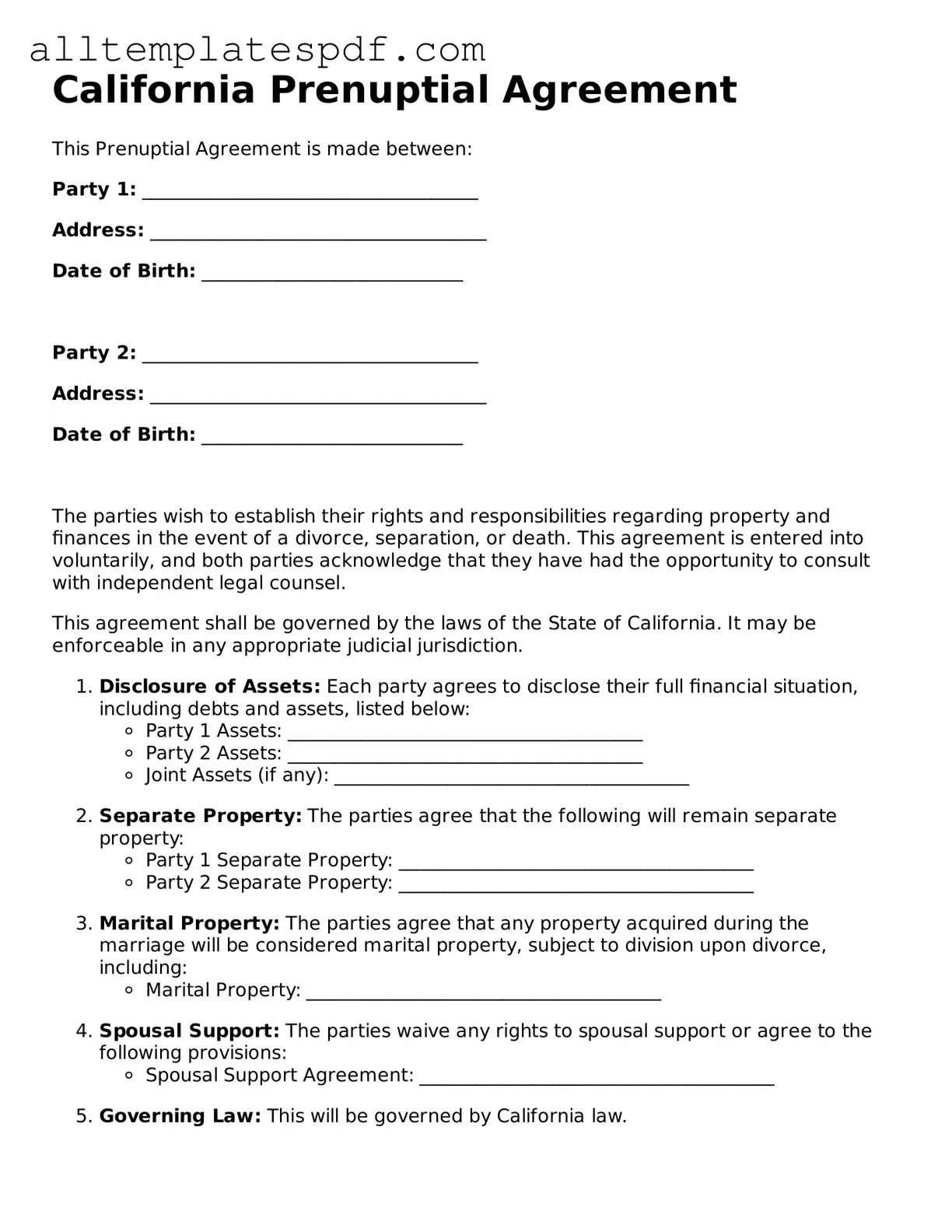Filling out a California Prenuptial Agreement can be a daunting task, and many individuals make mistakes that could have long-lasting implications. One common error is failing to fully disclose assets and debts. Transparency is crucial in these agreements. If one party does not reveal their financial situation accurately, it can lead to the entire agreement being deemed unenforceable.
Another frequent mistake involves the lack of legal representation. While it may seem cost-effective to complete the form without consulting an attorney, having legal guidance ensures that both parties understand their rights and obligations. This oversight can lead to misunderstandings and disputes later on.
People often overlook the importance of clarity in the language used within the agreement. Vague terms can create confusion and lead to differing interpretations. Each provision should be articulated clearly to avoid potential conflicts in the future.
Additionally, couples sometimes neglect to consider future changes in circumstances. Life events such as the birth of children or significant changes in income can affect the validity of the agreement. Failing to address these possibilities can render the prenuptial agreement less effective.
Another common pitfall is not having the agreement signed in front of witnesses or notarized. In California, a prenuptial agreement must meet certain formalities to be enforceable. Skipping this step could jeopardize the agreement's validity.
People may also forget to review the agreement periodically. As life evolves, so should the terms of the prenuptial agreement. Regular reviews can ensure that the document remains relevant and reflective of both parties' current situations.
Some individuals mistakenly believe that a prenuptial agreement can cover everything, including child custody and support. In California, courts will not enforce provisions related to child custody or support that are included in a prenuptial agreement. This misunderstanding can lead to disappointment and confusion.
Furthermore, couples sometimes fail to discuss the agreement openly and honestly. Avoiding conversations about financial matters can create resentment and mistrust. Open dialogue is essential for a healthy relationship and a successful prenuptial agreement.
Lastly, people may not take the time to understand the implications of the agreement fully. Each clause can have significant consequences, and a lack of comprehension can lead to regret later on. Taking the time to carefully consider each provision is essential for both parties.
